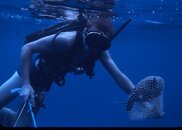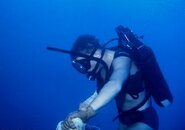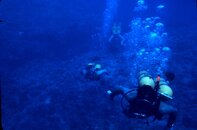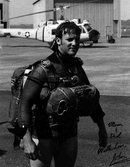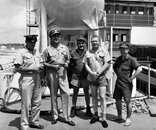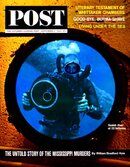In the USAF Pararescue, we were using the first and second generation Calypso before it was approved by Navy EDU, as the DA Aquamaster really did not work well for parascuba jumping. A bit later, we converted to MR-12s, and the comment I heard from some of the other PJs was that the MR-12 seemed "rinkydink" compared to the USD Calypso. Here's a couple of our training dives from Okinawa in 1968, and me in parascuba gear circa 1976.
Do you have any pearls of wisdom, stories, or information that Chief Cyril Tuckfield passed to you that you can share? That would be fascinating. I had heard of his buoyant ascent, although I did not know it was him. I think it was still being talked about in the U.S. Naval School for Underwater Swimmers when I went through in 1967. Also, I have a book in my library titled Underwater Physiology, Edited by C.J. Lambertsen, and he has some papers in it too. I have used it as a reference for many, many years now.
SeaRat
Akimbo:...Chief Cyril Tuckfield was running the dive locker as his last duty station before retirement. Tuck was a legend.
He made the buoyant ascent from 302' from the submarine the USS Archerfish in 1959 with Captain George F. Bond, the father ofSaturation Diving. His long friendship with Bond lead to his being on all three Sealab projects, either as a support diver or an Aquanaut on Sealab II. I lived in the enlisted quarters across the street from the dive locker and would spend hours talking with him. Aside from being one of the nicest and most modest humans you could ever meet, he would share any bit of knowledge he had accumulated.
Do you have any pearls of wisdom, stories, or information that Chief Cyril Tuckfield passed to you that you can share? That would be fascinating. I had heard of his buoyant ascent, although I did not know it was him. I think it was still being talked about in the U.S. Naval School for Underwater Swimmers when I went through in 1967. Also, I have a book in my library titled Underwater Physiology, Edited by C.J. Lambertsen, and he has some papers in it too. I have used it as a reference for many, many years now.
SeaRat
Attachments
Last edited:




